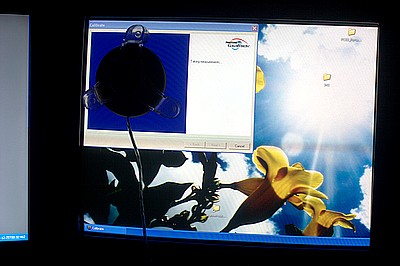
I finally got around to getting a display colorimeter—an old ColorVision Spyder that only works with CRT monitors, which I found on eBay. I was pleased to find that my colors from calibrating by eye were accurate, though I had the brightness up too high. I do have a ViewSonic Q19wb widescreen monitor, but I don’t trust it to photo-editing as its colors are not near the accuracy of an old-fashioned CRT. A reviewer on Amazon.com sums it up well:
“Colors are not truly natural. But if you are looking for a big screen to browse Internet and not a photographer who is really concerned about colors, then this is a good buy.”
Unfortunately, while this one is considered low-end at about $150, the same can be said for most LCD monitors. Even after endlessly fiddling with the settings on my video card and LCD monitor, it still retains a bluish cast and clips the next-to-white colors in calibration charts. For $50, you can pick up a used CRT screen that will serve you better for photo-editing than most $500 LCDs, even in 2007.
Regardless of your monitor, display calibration is very important, because if the colors on your monitor aren’t standard, you can trust that they’ll be noticeably different when printed or displayed on other monitors. All the photos that you’ve carefully edited will have to be fixed once again if your screen was too blue, too bright, or off in some other way. Even if you don’t want to pay for hardware-based calibration, calibrate by eye, as it’s better than nothing.
